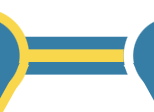

This document is an excerpt from the EUR-Lex website
Fishing opportunities in the Baltic Sea (2025)
Fishing opportunities in the Baltic Sea (2025)
Fishing opportunities in the Baltic Sea (2025)
- Date of last review:
- 18/03/2025
- Responsible entity(ies):
- Directorate-General for Maritime Affairs and Fisheries
- Summarised document(s):
- Summary code:
-
- 02.06.04.00 Preserving & managing fisheries stocks
- EUROVOC descriptor:
- Directory code:
Fishing opportunities in the Baltic Sea (2025)
SUMMARY OF:
WHAT IS THE AIM OF THE REGULATION?
- Regulation (EU) 2024/2903 fixes the 2025 total allowable catches (TACs) applicable to European Union (EU) fishing vessels fishing for certain fish stocks in the Baltic Sea, to improve their sustainability or help at-risk stocks to recover.
- The regulation sets out restrictions on some species for recreational fisheries1.
KEY POINTS
Total allowable catches and allocations
- TACs for various fish species from the Baltic Sea in 2025 are listed in the Annex to the regulation.
- The set limits follow the principle of sustainable exploitation in line with the maximum sustainable yield2 and the multiannual management plan for Baltic Sea fisheries (Regulation (EU) 2016/1139).
- They are based on the best available scientific advice from the International Council on the Exploration of the Seas and take into account biological and socioeconomic factors.
- The limits are decided by the EU Member States based on a European Commission proposal.
- The TAC for each individual species is divided into quotas – proportions of the TAC assigned to Member States.
Species quotas
TACs for 2025 are summarised as follows.
- Cod (Gadus morhua):
- due to low biomass levels, the regulation sets TACs for by-catches3 only, in order to allow for the recovery of the stocks;
- fhe catch limits for the two cod stocks (eastern Baltic and western Baltic) are reduced by 28 % and 22 % respectively, compared to 2024 levels;
- recreational cod fishing in the entire area is banned, but the regulation takes into account incidental by-catches;
- fishing in some areas is prohibited at certain times to protect cod spawning.
- Herring (Clupea harengus):
- catch limits for central Baltic herring are increased by 108 % on the basis of an increase of the maximum sustainable yield due to a positive scientific forecast of the stock's biomass;
- catch limits for herring in the Gulf of Riga and herring in the Gulf of Bothnia are increased by 10 % and 21 %, respectively;
- due to low biomass levels of western Baltic herring, the regulation retains the 2024 TAC for unavoidable by-catches.
- Plaice (Pleuronectes platessa):
- while plaice stocks are healthy, cod is an unavoidable by-catch in plaice fisheries, so the TAC level remains the same as in 2024.
- Sprat (Sprattus sprattus):
- the TAC is reduced by 31 %, in order to prevent a decline below sustainable levels.
- Salmon (Salmo salar):
- the TAC is decreased by 36 % but is maintained for salmon in the Gulf of Finland;
- the restrictions on recreational salmon fishing are maintained.
Amendment to Regulation (EU) 2024/257
The regulation also amends Regulation (EU) 2024/257 (see summary) in relation to an agreement with the United Kingdom on fishing opportunities for Norway pout in the Skagerrak-Kattegat and in the North Sea.
FROM WHEN DOES THE REGULATION APPLY?
The regulation applies from . However, the provisions relating to Norway pout in the Skagerrak-Kattegat and in the North Sea apply from until .
BACKGROUND
For further information, see:
- Agreement reached on 2025 fishing opportunities for the Baltic Sea (European Commission).
KEY TERMS
- Recreational fisheries. Non-commercial fishing activities exploiting marine biological resources.
- Maximum sustainable yield. The largest yield (catch) that can be taken from the stock of a species over an indefinite period without endangering its survival.
- By-catch. Unwanted fish and marine species caught unintentionally.
MAIN DOCUMENT
Council Regulation (EU) 2024/2903 of fixing the fishing opportunities for certain fish stocks and groups of fish stocks applicable in the Baltic Sea for 2025 and amending Regulation (EU) 2024/257 as regards certain fishing opportunities in other waters (OJ L, 2024/2903, ).
last update






